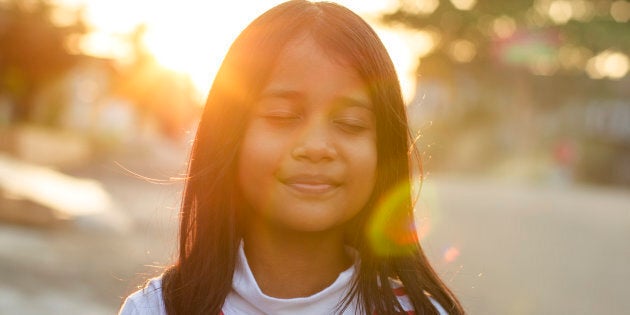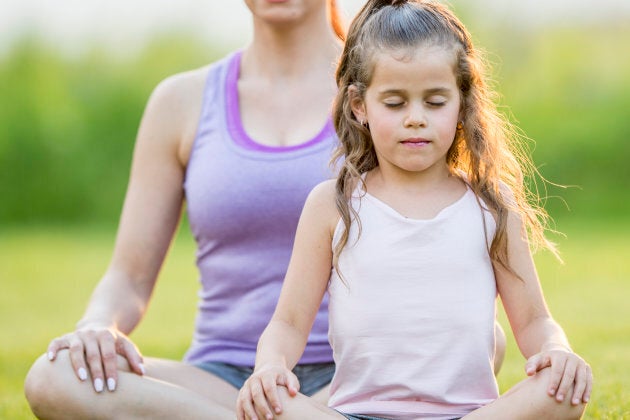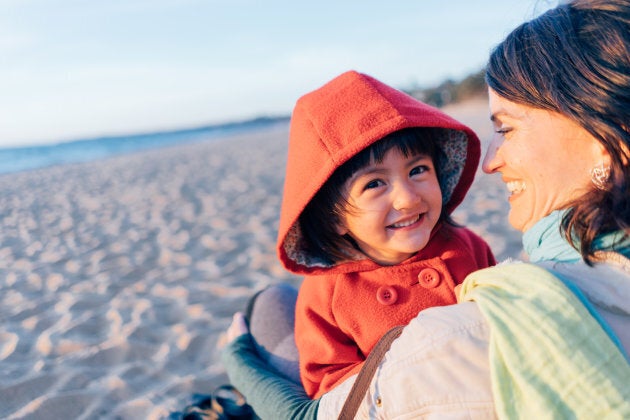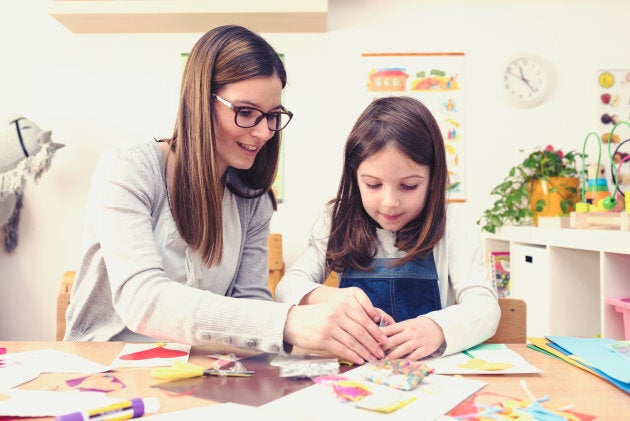
The back-to-school season brings its own unique stressors to just about everyone: young children starting school for the first time, older kids dealing with longer days and social pressures, teenagers who have to make decisions about their futures, and of course to parents who might also feel overwhelmed. But researchers at Vancouver's Kelty Mental Health Resource Centre have suggested strategies to deal with back-to-school stress.
"Mindfulness" has become a bit of a buzzword recently, along the lines of "radical wellness" and "living your best life." But beyond the context of GOOP, there's a lot of value in the idea that we could all focus more on the present moment.
The basic tenet of mindfulness is the idea that stress and pain is often the result of thinking about past regrets or worrying about the future, and that can be combated by coming up with strategies that focus on remaining in the present moment. HuffPost Canada spoke to Dr. Dzung Vo, an adolescent medicine specialist and pediatrician at British Columbia's Children's Hospital, about how kids can implement those strategies.

"I define mindfulness as paying attention in a particular way, on purpose, in the present moment, and with unconditional love," Dr. Vo says. "It's not meant to be something that you succeed or fail at, it's more of an intention and an attitude that we orient ourselves to when we practice being in the present moment."
Studies have shown that mindfulness can reduces stress and anxiety, improve attention and memory, and encourage empathy and monitor your emotions. It's also been shown to be beneficial physically by lowering blood pressure and heart rate. And new research is currently underway to determine whether it can be a helpful tool to fight against depression.
Vo's pediatric practice focuses primarily on teenagers, but he says there are effective strategies that can help just about every age group understand their feelings, process their reactions, and live a healthier emotional life.

Babies and toddlers
By far the most important factor in teaching very young children to be mindful is to have a parent or caregiver who is mindful themselves.
"What we know from neuroscience is that the parent's own mental and neurologic state has a profound influence on regulating the child," Vo told HuffPost Canada. "If the parent or caregiver can be mindful, present, attentive, and attuned with unconditional love and presence, then that will affect the child in very deep and healthy ways."
One of the principles of mindfulness is approaching a subject with "beginner's mind" — a sense of curiosity and presence you might use if you were trying something for the first time. This is something young children generally do anyways. "Kids are actually pretty naturally in the moment, so it's not too hard to do," Vo says.
School-age kids
Vo suggests adding brief mindfulness exercises into the routine of slightly older children, maybe at bedtime or when they get home from school. One idea is to get them to lie with a teddy bear on top of their belly and ask them to slowly breathe in and out, he says. Watching the teddy bear go up and down with their breath will put them in tune with their bodies, and put them in a state of calm.
Another useful activity can be to sing songs with lyrics that remind kids to think about where they are and how they feel — he suggests "Planting Seeds" by Zen master Thich Nhat Hanh. "As kids go through their day, when they need a mindful moment, they just sing the song," he says. "Singing it actually is a practice, because it cultivates that mindful attitude."

Crafts and artwork, approached with the "beginner's mind," are another helpful way to practice mindfulness. Vo suggests gently guiding children to be curious and really focus on their surroundings and what they might be engaging in.
"Maybe they're drawing a flower in front of them," he says. "Encourage the child to really pay attention to it by asking them: What are you seeing there? What are you noticing? What are the colours? What are the shapes?"
It isn't particularly important that children understand the idea of mindfulness, he says.
"It's more important to have experiences than to talk too much about the concepts."And again, he stresses that the most important way to teach mindfulness to kids is the mindful presence of the parent or caregiver.
Teenagers
In his sessions with teens, Vo will often get them to try out their "beginner's mind" by slowly eating one single raisin. "That might seem very simple and boring, but when you bring curious attention to it, you find experiences that seem tedious or boring may be quite interesting, or quite relaxing, or quite enjoyable in ways that we hadn't considered when we go through them in autopilot mode."
Many teenagers will bring what Vo calls "informal meditation" to a wide variety of day-to-day activities: breathing deeply and considering their senses while walking the dog, or waiting for the bus, or washing dishes. It can particularly help before a stressful situation at school — right before writing an exam, for instance.

There isn't a lot of research on the benefits of mindfulness for teens, but Vo says that he believes that's the time of life when those practices would be most beneficial.
Studies of adults have demonstrated that mindful practices can actually change the parts of the brain linked to memory, self-image, and emotional regulation. Because adolescent brains are changing quickly and profoundly, Vo says he thinks the effects would be even more significant. One of the biggest adolescent brain changes involves the prefrontal cortex, the part of the brain responsible for emotional regulation and executive functioning, which develops throughout the teenage years up until the early 20s. It develops through focused attention and concentration, he says, which suggests that the more that they use these neurologic pathways to help regulate their brains, the stronger those connections will get.
More from HuffPost Canada:
Some classrooms are starting to integrate very quick mindfulness exercises, which Vo says is useful. He's found children can be more open-minded than adults in committing to new ideas.
When he was first learning to be mindful, he was given an exercise he suggests other people try. "My mindfulness teachers asked me to wash the dishes mindfully: following my breathing, paying attention to my senses, the sights, the sounds, the smells," he said. "And what I've found is that washing the dishes is actually really interesting. There's nothing boring about it. It was my mindset that was different."
Also on HuffPost: